Get the weekly SPARTANAT newsletter.
Your bonus: the free E-Book from SPARTANAT.
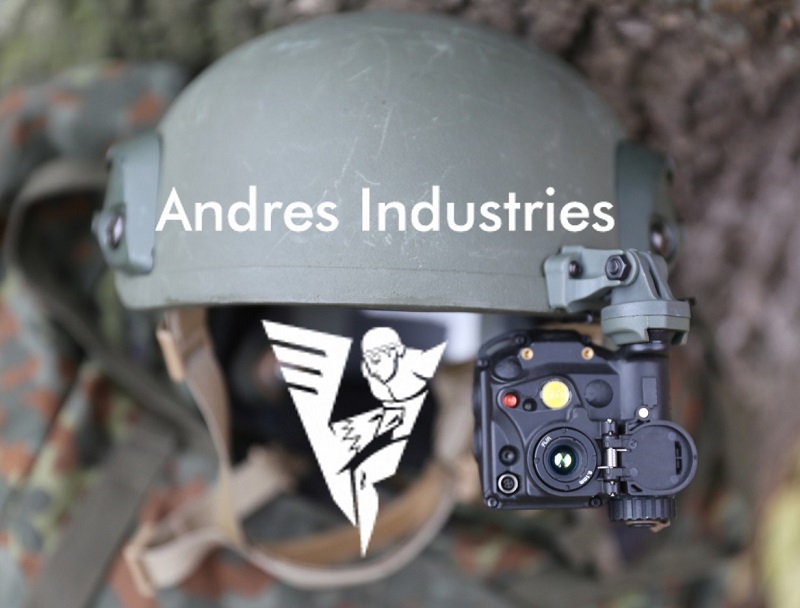
TILO-Challenge (2): The TILO with police special forces
Translation services are available only for text, not HTML elements, image sources, or links. The user shares their experience participating in the TILO Challenge, testing the world's smallest thermal optics. They provide insights on the device's performance, accessories, operation, filters, collimation, and shooting capabilities. The TILO is praised for its small size, light weight, and effectiveness in various tactical situations.
Some time ago, we started the TILO Challenge together with Andres Industries: You could apply and then test the world's smallest thermal optics to its limits. Here is a Challenge user report from the field of police special forces. For those looking for technical specifications or a user manual, you can find them on www.andres-industries-shop.de .
At the beginning of 2018, I was privately and also for official use with the SEK, dealing with night vision. I came across an article about the TILO. While thermal imaging was not a major topic for me at the time, my interest was piqued.
At the Enforce Tac fair, I had the opportunity to take a look through the TILO-3M (equivalent technically to the 3Z+) and even the TILO-6Z+. The first impression was really promising: small, light, robust, and to my surprise, a smooth and blur-free image. Since then, the TILO had entered my focus as a serious tool for special units. The following test is about the TILO-3Z+ (a few words about the TILO-6Z+ later).
The Challenge
When it was announced that Andres Industries was starting the TILO Challenge, it was clear to me that I wanted to participate. Conveniently, this avoided the often complicated process of an official test through the authority.
In September, the package with the coveted object arrived. For such a small device, it came in a pretty large, stable plastic case. Given the already limited space in the operational vehicles, a slightly smaller case of the same make would be desirable. But here, it's about the inner values. So, unpack, insert the battery, open the protective cover, and the TILO was running. A great toy, see footprints when the girlfriend walks barefoot through the apartment and find out that women actually have colder feet than men.
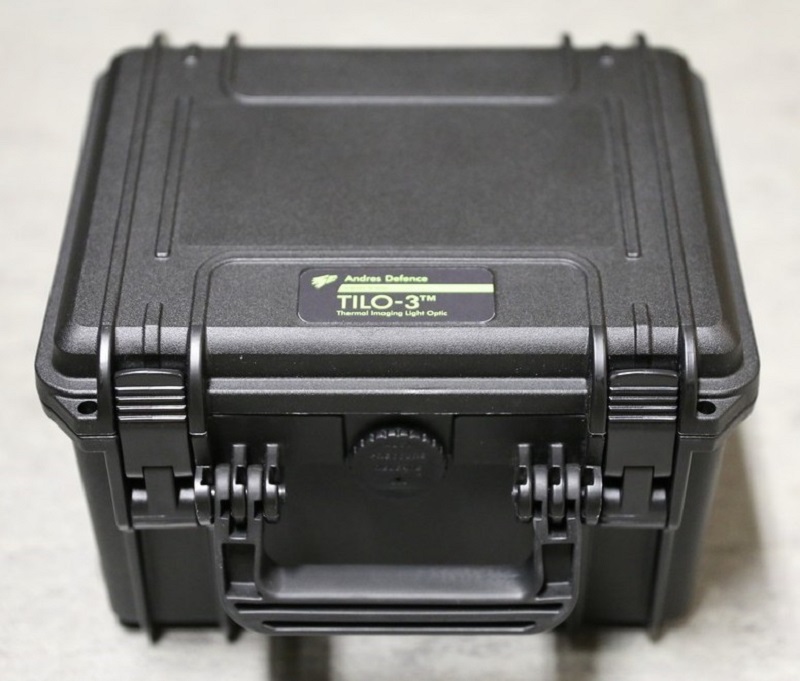
Now for more serious tests. Initially, the TILO was only carried in the jacket pocket or backpack to be able to try it out in any situation. Twice, the front flap opened, the device started, and accordingly, the battery was empty on the next start attempt. Subsequently, the activation via flap was deactivated in the menu, and the device was manually started with the buttons. Only when the TILO was attached to the helmet for training or operations, it was set to flap activation. This way, the battery lasted quite a while, although I was not usually constantly on the move.
I realized how many situations I reached for the TILO, simply because it was there. It is so small and light that there is no reason not to have it with you.
Although there are several thermal imaging devices available for official use, they are rarely used. They are too big, too heavy, and without a specific plan to use them, they are not carried. If each team had an operator personally assigned to the TILO, there would be the option to use thermal imaging in any situation.
Accessories
It came with an eye cup, a head strap, a helmet mount, a cleaning cloth, a manual, and a battery. ACTinBlack later supplied a 30mm camera adapter.
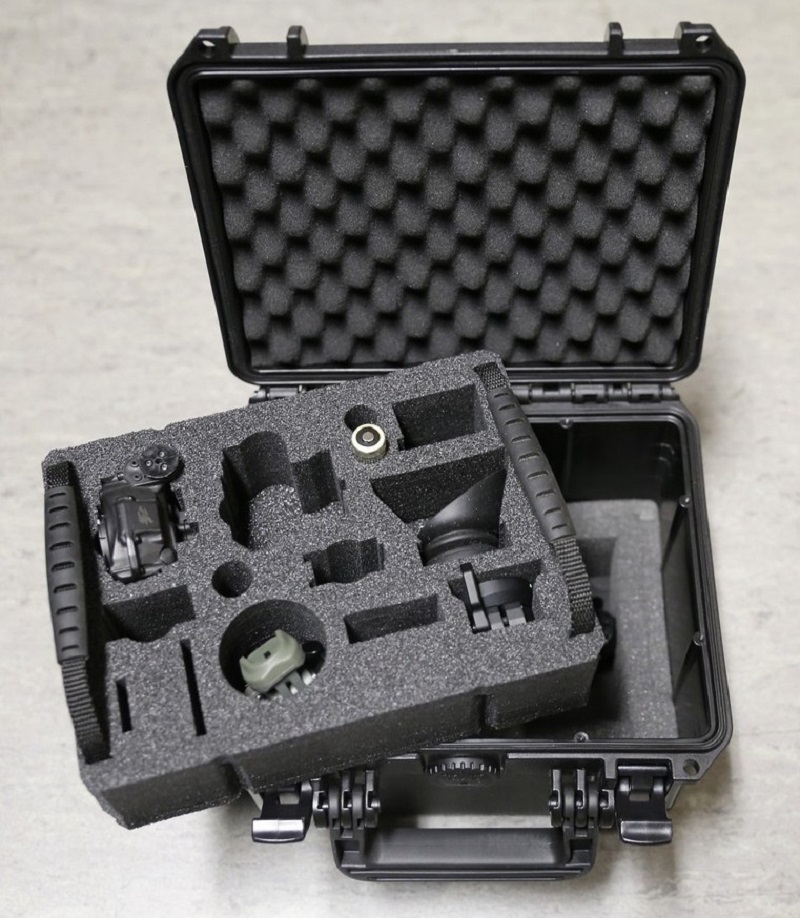
The eye cup was not used, partly because it loses peripheral vision, and from experience, devices with eye cups tend to fog up under physical stress. Using the TILO in the immediate and sensitive vicinity of target individuals, where stray light plays a role, is, in my opinion, the absolute exception.
The head strap had its advantages for me as a hunter since it allows hands-free use. However, to properly use the TILO in operations, it must be adapted to a helmet. Only then is it stable and stays in position. Initially, the connection between the helmet mount and the TILO was a bit stiff and not very reassuring, but then it held surprisingly well.
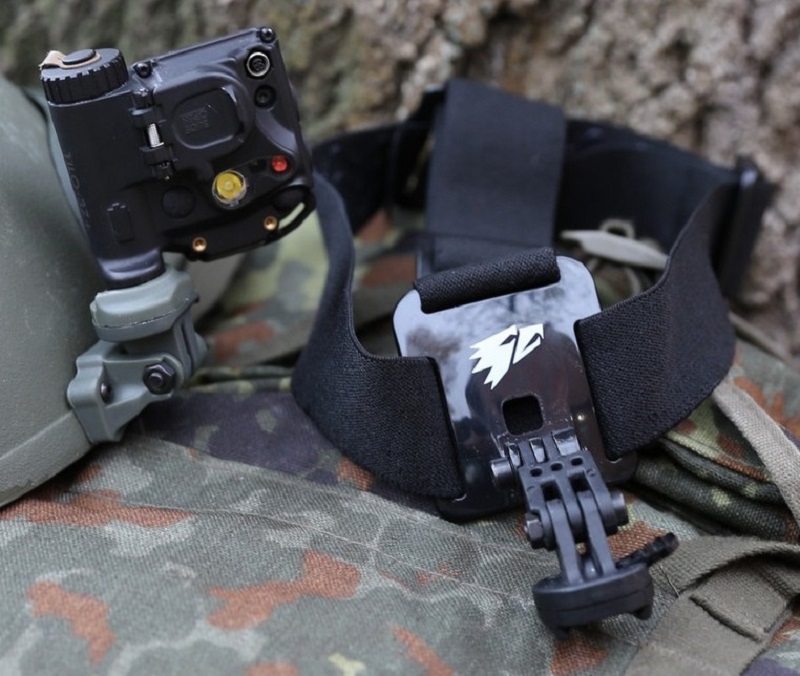
Nevertheless, I would always additionally secure the TILO with paracord on the helmet. There are times when things get rough, and in those cases, a double securing method is always better.
Attaching the helmet mount to the NIJ IIIA helmet was a tight fit, and to a prototype helmet that stops 7.62×39 with soft iron core (certification according to VPAM 6 is pending), it did not fit due to the thicker dome.
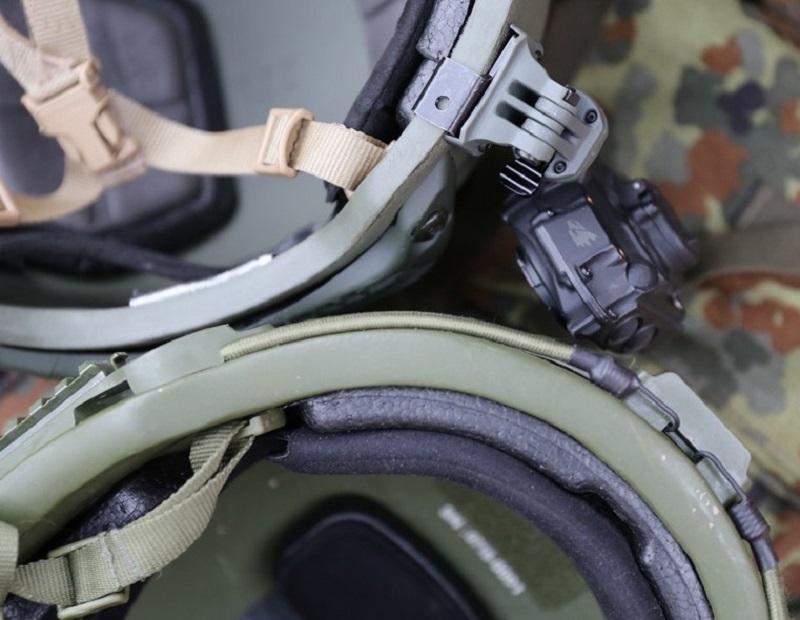
The 30mm camera adapter from ACTinBlack was mounted on a Schmidt & Bender 1.5-6×20 PM II ShortDot. Unfortunately, the lever could not be used as a quick-release mount with this scope. Nevertheless, I would have fixed it firmly for better repeatability. By repeatedly attaching and detaching, the inner rubber of the adapter was damaged. Otherwise, it is well made and keeps the TILO where it should be.
Operation
With some time invested in studying the manual, operating the TILO is quickly understood and can be easily done even in the dark.
When the TILO is activated, you have an image after about 3-4 seconds, which is quite fast compared to other devices. It starts with a "magnification" of 0.8 and the last selected brightness level. If used for tactical maneuvering at a 1x "magnification", it is disadvantageous to change the magnification every time after switching off and back on. While individual magnification levels can be disabled in the menu, in that case, they are no longer quickly available.
Regarding the adjustment of brightness, it is unfortunate in my opinion that only one button is used for adjustment. If you are on level 3 in the ascending direction, you have to click through to the brightest level 9 before going down, reaching the desired level 1 for example. In dark environments, high levels create a lot of stray light and unnecessarily blind the eye. Therefore, a more user-friendly operation would be preferable, where you could enter the adjustment mode with one button and then adjust up and down with two buttons.
In the two months of testing, the TILO froze twice while adjusting settings in the menu and the device stopped responding. One time, a restart by closing the protective cover helped, and the other time, the battery had to be briefly removed. Otherwise, the TILO ran smoothly without interruptions.
Filters
The TILO has a surprisingly large number of filters that you can play with:
- The best, most detailed image is provided by White Hot (WH).
- Additionally, Red Hot (RH) was used a lot, as the eye is least affected after getting used to the dark.
- Hottest (HOT) is helpful when the sun is not shining, and the surroundings are cooler. Especially during longer observations, heat sources with a significant temperature difference from the surroundings are highlighted in orange in a black and white image, immediately capturing attention.
These three filters were used almost exclusively.
- Black Hot (BH) provides a more natural image of the surroundings and makes quick orientation easier. However, details of heat sources are hardly noticeable. If a target person holds a weapon in front of their body, it may disappear in the image.
- Cold Green (CG) could be useful for situations where less stray light is desired. Personally, I do not consider stray light issues critical, at least at low brightness levels, so I did not really test CG.
All other filters are not significant in terms of tactical matters.
Collimation
When the TILO is fixed in position in front of the eye with the helmet mount, tactical maneuvering can be done. In this case, collimation needs to be performed. This deactivates the "magnification" of 0.8, which can be reactivated in the menu but cannot be collimated. But what does that mean? If both eyes are open and one eye looks through the TILO, double images may occur. To create a single image in the brain from the real image and thermal image, the display at 1x "magnification" in the menu needs to be aligned so that both images overlap.
This allows the TILO to be combined in front of the left eye with a residual light intensifier tube in front of the right eye. This way, nothing can escape you. This viewing technique may require some practice, as the dominant eye typically determines what is seen. Mastering this skill adds a sixth and seventh sense, and the TILO also provides the IR illuminator.
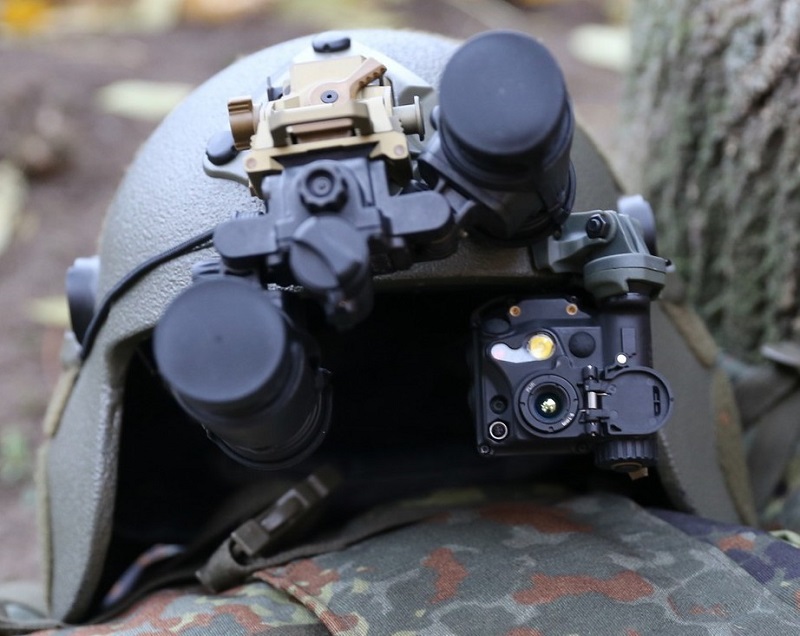
Shooting with Thermal Imaging
When the TILO is properly collimated, it can be used, not directly in front, but in combination with a red dot sight. The naked eye sees only darkness except for the red dot, while the other eye sees the thermal image. The brain merges both images, allowing for accurate shooting. Shooting with a handgun through the TILO with iron sights is only possible to a limited extent, but in an emergency, it is better than blindly shooting into the dark.
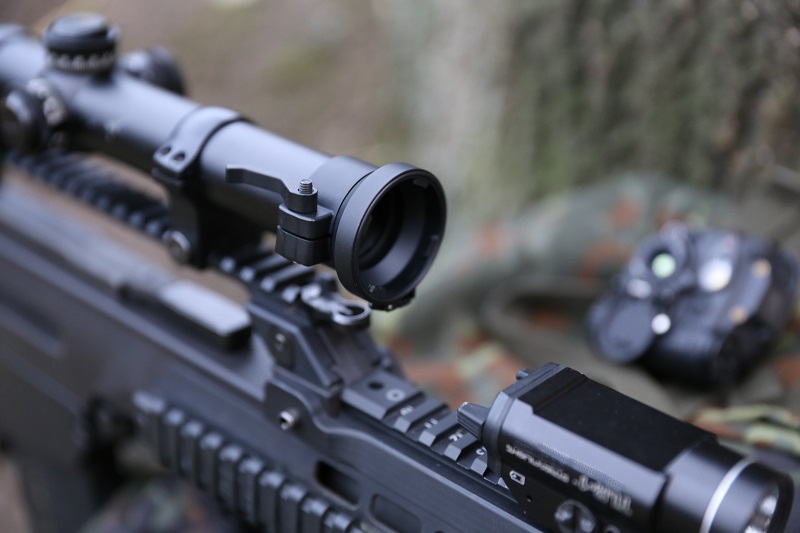 Collimation is also required when mounting the TILO in front of a riflescope and zeroing it. Unfortunately, the 0.8 scale cannot be collimated, as with a 1.5x scope, the reduction provides a wider field of view. Ideally, a riflescope with a 1x magnification
Collimation is also required when mounting the TILO in front of a riflescope and zeroing it. Unfortunately, the 0.8 scale cannot be collimated, as with a 1.5x scope, the reduction provides a wider field of view. Ideally, a riflescope with a 1x magnification
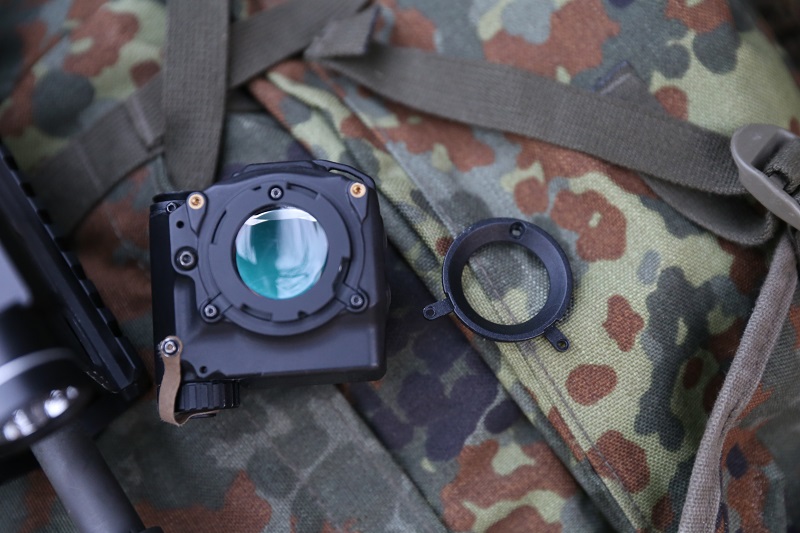 "magnification". In front of an EoTech or Aimpoint, the TILO unfortunately does not work, as the correct eye relief is not suitable. However, it is a powerful tool in front of a riflescope.
"magnification". In front of an EoTech or Aimpoint, the TILO unfortunately does not work, as the correct eye relief is not suitable. However, it is a powerful tool in front of a riflescope.
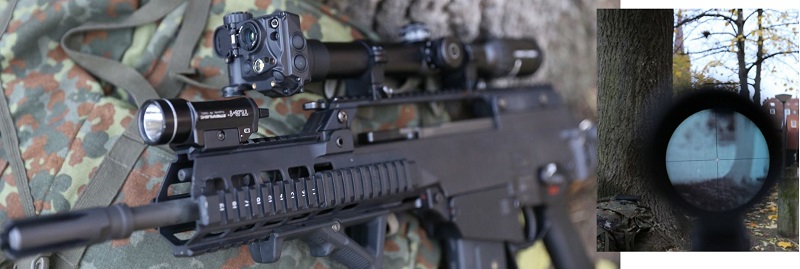
A security shooter does not have to mount large and heavy night vision devices on their weapon or try awkwardly to use a residual light intensifier to look through the riflescope. The TILO can be mounted with a simple action and is inconspicuous on the weapon until you look through the optic, turning night into day. It's a shame that, in Germany at present (with a few exceptions), this experience is reserved for authorities only. Some hunters would probably not be averse to it.
The repeatability was not tested, unfortunately.
Comparison of Thermal Optics
The TILO does not need to be afraid of a comparison with larger and heavier devices. An old device that blurs during fast movements is not further mentioned here. From L3, the thermal imaging sight Close Quarter Battle Sight (CQBS) and the Mini Thermal Monocular (MTM)
SPARTANAT is the online magazine for Military News, Tactical Life, Gear & Reviews.
Send us your news: [email protected]
Ad
similar
Get the weekly SPARTANAT newsletter.
Your bonus: the free E-Book from SPARTANAT.


